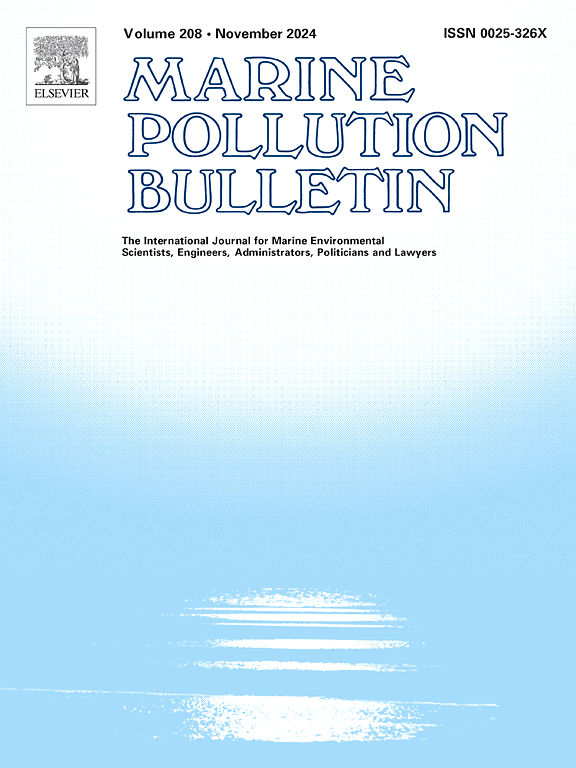Understanding sediment nutrient cycling in a hypersaline coastal lagoon using hydrogel-based passive sampling techniques
IF 5.3
3区 环境科学与生态学
Q1 ENVIRONMENTAL SCIENCES
引用次数: 0
Abstract
The Coorong, South Australia, is a Ramsar-listed hypersaline coastal lagoon system of significant ecological and cultural importance. Despite facing environmental challenges such as reduced river flow and eutrophication, there is limited knowledge of organic matter fate and nutrient cycling in this system. Understanding nutrient movement and transformation within the Coorong is crucial for effective ecosystem management. This study applied diffusive equilibrium in thin films (DET) and diffusive gradient in thin films (DGT) techniques to measure dissolved nutrients (ammonium and phosphate), dissolved ferrous iron, and sulfide in sediment porewaters across a strong salinity gradient. Sampling sites were selected to capture different environmental conditions, including areas colonised by microphytobenthos and the aquatic macrophyte Ruppia tuberosa (hereafter called Ruppia). Concentration profiles were examined in both light and dark conditions to assess biotic influences on nutrient dynamics and sediment redox conditions. Sediment porewaters in deeper sites of the South Lagoon exhibited high ammonium (941–1718 μmol/L), phosphate (83–171 μmol/L), and sulfide (66–79 μmol/L) concentrations, with negligible nitrate, indicating highly anoxic conditions unsuitable for most benthic fauna. Shallow sediments showed varying concentrations of ammonium, phosphate, dissolved ferrous iron, and sulfide across different sites and depths, influenced by Ruppia and microphytobenthos. The site colonised by Ruppia contained the lowest porewater ammonium concentrations (∼30 μmol/L), suggesting that macrophyte presence can mitigate nutrient buildup in sediments. These findings indicate that sediment quality and nutrient cycling in the South Lagoon may be improved by enhancing the presence and biomass of aquatic macrophytes and macroinvertebrates.

求助全文
约1分钟内获得全文
求助全文
来源期刊

Marine pollution bulletin
环境科学-海洋与淡水生物学
CiteScore
10.20
自引率
15.50%
发文量
1077
审稿时长
68 days
期刊介绍:
Marine Pollution Bulletin is concerned with the rational use of maritime and marine resources in estuaries, the seas and oceans, as well as with documenting marine pollution and introducing new forms of measurement and analysis. A wide range of topics are discussed as news, comment, reviews and research reports, not only on effluent disposal and pollution control, but also on the management, economic aspects and protection of the marine environment in general.
 求助内容:
求助内容: 应助结果提醒方式:
应助结果提醒方式:


